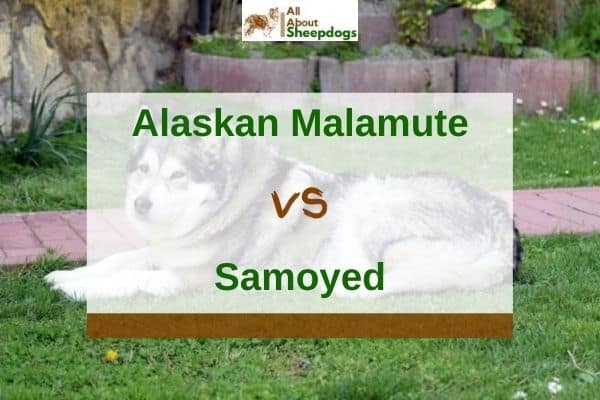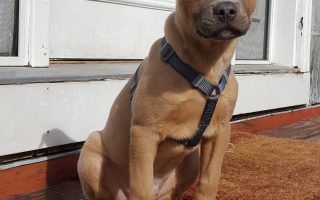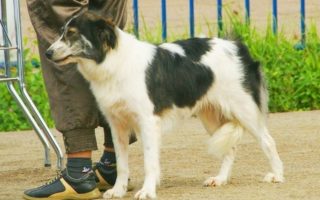When it comes to hard workers in the canine world, hardly any dog can match the Alaskan Malamute and Samoyed.
These northern breeds were developed in the harsh conditions of areas near the Arctic Circle where they provided invaluable help to the humans living there.
Even though they originate from different continents, these breeds share a comparable background, and the Alaskan Malamute vs Samoyed comparison reveals a lot of similarities.
They both took on a lot of hard work for their humans including pulling the sleds or packing other kinds of loads.
To be able to do so, they developed exceptional strength, endurance, and speed. They also share a similar wolf-like appearance, characteristic of all northern breeds.
Also, behind menacing looks, they both are very friendly, affectionate, and playful dogs.
Below, I’ll take a closer look at what these two breeds have in common and what separates them.
So, let’s dive in!
| Attributes | Alaskan Malamute | Samoyed |
| Good For First Time Owners | No | Yes |
| Good Guard Dog | No | No |
| Apartment Friendly | No | With Enough Exercise |
| Good Family Dog | Yes | Yes |
| Shedding | High | High |
| Barking And Howling | Low | High |
| Height | 23-25 inches (58-64 cm) | 18-24 inches (48-60 cm) |
| Average Life Expectancy | 10-14 Years | 12-14 Years |
[wpsm_toplist]
Alaskan Malamute – Dog Breed Information

Alaskan Malamute is an ancient dog breed, with roots going back thousands of years when it was used as a working dog by the Malemute Inupiaq people of Alaska.
Malamute shares ancestry with other Arctic breeds such as Samoyeds or Siberian Huskies.
They were very valuable to native Alaskan people as sled pullers and in polar bear and seal hunting.
In more modern times, they took part in several polar expeditions. They’re still known as hard workers but have also become popular as family dogs.
Appearance
Like all dogs used to pull sleds, Alaskan Malamutes have a powerful and sturdy body providing strength and stamina.
They feature a compact build and are slightly longer than tall.
The body of the Alaskan Malamute is covered with a double coat which was necessary to withstand freezing Alaskan weather.
The undercoat is very thick, about two inches, and has an oily and wooly texture, while the topcoat is coarse and medium-long.
The coat’s length increases around the neck, down the back, and in the breeches.
Color patterns can vary, covering the various shades of gray, sable, black, seal, and red, with white markings.
Eyes are dark brown and almond-shaped while the ears are relatively small and erect. The tail is bushy and carried over the back.
Male Malamutes grow 24-26 inches (62-64 cm) and weigh 81-86 pounds (37-39 kg).
Females are 22-24 inches (56-61 cm) high and weigh 70-75 pounds (32-34 kg).
Temperament
Despite their menacing, wolf-like appearance, Alaskan Malamutes are very kind and playful dogs who enjoy spending time with their family.
They’re friendly even towards strangers which is why they don’t make very good watchdogs.
Also, Mals are great with kids, but they don’t get along that well with other dogs and animals.
They are very intelligent, but as with all pack dogs, you’ll have to establish yourself as a leader to earn
Malamute’s obedience to be able to conduct proper training. Otherwise, they can become rather stubborn.
Also, to have a well-behaved Alaskan Malamute, you’ll need to make sure it gets plenty of exercise.
They’re very energetic and active dogs, and if not properly stimulated can easily get bored and become destructive.
In addition, they have a tendency to wander, so if you plan to keep them in the yard, make sure it’s surrounded by a high fence.
Samoyed – Dog Breed Information
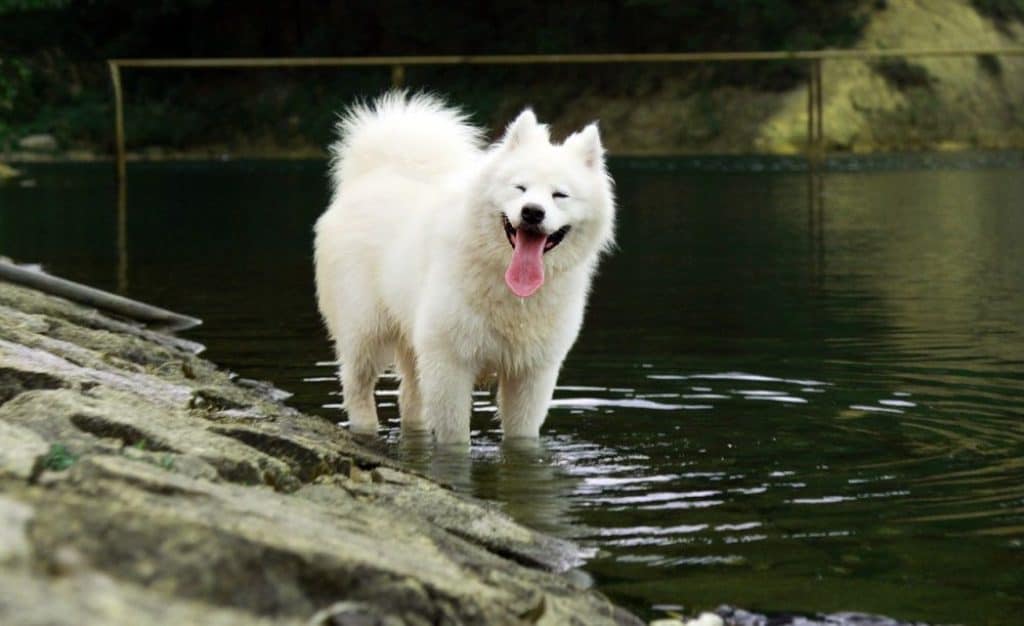
Samoyed is also a very old breed, with origins in Northwest Russia and Western Siberia.
They were developed by the indigenous Samoyede people who used Samoyeds to pull the sleds and provide help hunting and herding.
They also helped their humans by keeping them company and providing warmth during the long freezing nights.
Appearance
Samoyeds are medium-large, strong, and powerful, but at the same time very elegant and graceful dogs.
Even though they’re a bit longer than tall, they still feature a very compact type of body.
Like all northern breeds, Samoyeds have a long and dense double coat that provides insulation in cold weather.
The undercoat is thick and soft while the topcoat is straight and coarse, standing straight for the body.
Commonly, Samoyeds feature solid white color, although some dogs have cream or biscuit shades.
They are famous for their “Sammy Smile” created with an upturned mouth and short snout.
Ears are erect like with all spitz-type breeds while the eyes are almond-shaped and brown.
Adult males can be 18-24 inches (48-60 cm) high and weigh around 45-65 pounds (20-30 kg).
Females Samoyeds grow up to 18-21 inches (48-53 cm) and weigh 35-50 pounds (16-21 kg).
Temperament
Samoyeds are pack dogs who see the family as their pack and want to hang around them as much as possible.
They’re kind, playful, and friendly, especially towards kids. As a true working dog, Samoyed enjoys activity and exercise.
Make sure to include them in family activities whenever you can as they thrive when given something to do.
Otherwise, they can easily depressed and engage in problematic behavior.
However, they’re not the least bit aggressive, not even towards strangers which is why they are not perfect for guarding duties.
They’re highly intelligent and respond well to training, especially if you provide firm leadership.
They do have some independence tendencies, but nowhere as near as some other working dogs.
Still, they have a high prey drive and can easily wander off if you’re not careful.
Alaskan Malamute vs Samoyed – What’s the Difference?
| Alaskan Malamute | Samoyed |
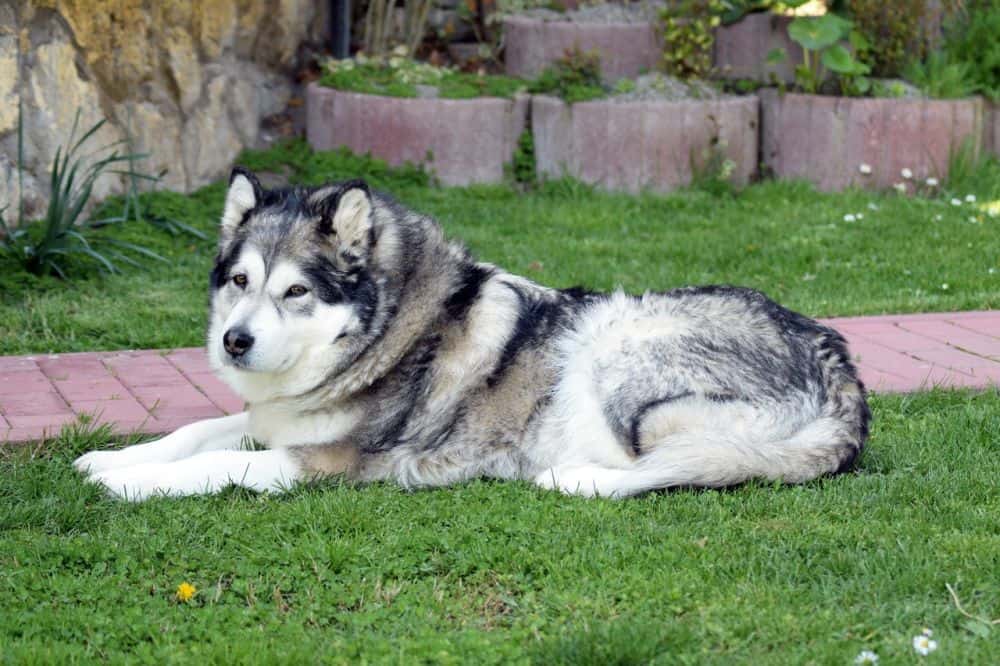 | 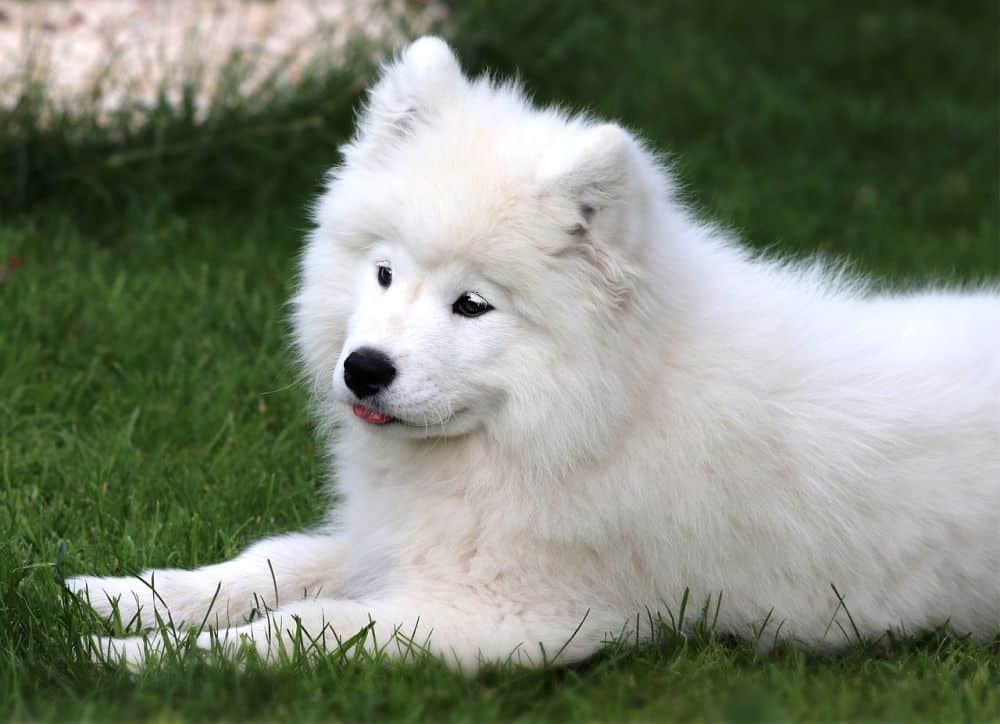 |
When talking about the differences between Alaskan Malamute and Samoyed, we should start with the most obvious ones.
Malamutes are the bigger of the two and, unlike Samoyeds, rarely feature solid white color.
Their size makes them less suitable for apartments and small living spaces and you should at least have a small yard if you plan on getting one.
Samoyeds are more adaptable and can thrive in different living environments.
Neither of these breeds is perfect for inexperienced owners, but Malamutes present a particular challenge.
They can be very gentle and obedient, but only in hands of the experienced and firm owners.
Furthermore, they’re the more sensitive of the two.
Both breeds do well with kids, but Samoyeds are a bit more patient and kid-friendly. They also get along with other animals much better.
Alaskan Malamute and Samoyed are both big shedders, but Sammies require less work when it comes to grooming.
Conclusion
While both Alaskan Malamute and Samoyed have a somewhat frightening and imposing presence, they’re among the best-behaved dogs you can find.
They do enjoy hard work, but they are also always up for playtime and all sorts of fun activities.
However, like all large dogs, they’re also a big responsibility.
If you plan on getting either of these breeds, carefully consider if you have what it takes in terms of lifestyle and living space.
Be aware that you’ll have to dedicate a fairly big chunk of your time to these dogs.
They love to spend time outside, so if you’re someone tied to the house, maybe these two breeds are not the best choice for you.

